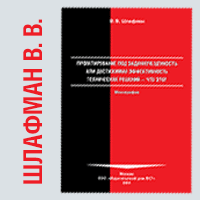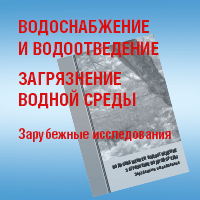№9|2025
ADVANCED TECHNOLOGIES AND EQUIPMENT
UDC 628.166
DOI 10.35776/VST.2025.09.03
Development and introduction of anodes (OIRTA-Pd) based
on palladium oxide for the production of sodium hypochlorite
Summary
The results of collaborative work of PAO GMK Norill’skii Nikel’and EKOFES SPE LLC on the development of new titanium anodes (MMO electrodes) with an electrochemically active metal oxide coating based on palladium oxide (OIRTA-Pd) are presented. Titanium anodes are designed for the production of sodium hypochlorite, which is in high demand in water treatment technologies as a disinfectant replacing environmentally hazardous liquid chlorine. The results of studying the properties of electrodes with coatings of different oxide compositions and percentage ratios of platinum group metals in them, as well as the results of the production tests of prototypes of the developed electrodes are presented. It is established that palladium oxide in the coating composition improves the selectivity of active chlorine formation and increases the corrosion resistance of the electrodes contributing to an increase in the service life of the anode. The OIRTA-Pd composition is likely to become viable for manufacturing application owing to the improved characteristics relative to the composition of the reference coatings ORTA and OIRTA; whereas, in terms of the specific energy consumption indicator, it has characteristics superior to analogs – 3.72 kW·h/kg. In addition to the above, the voltage of the industrial electrolyzer is 5.6% lower compared to OIRTA. The developed OIRTA-Pd electrodes have a manufacturing cost comparable to OIRTA and a lower life cycle cost.
Key words
sodium hypochlorite , electrolysis , water disinfection , electrolyzer , titanium anode with electrochemically active metal oxide coating , MMO electrodes , OIRTA-Pd , palladium
For citation: Fesenko L. N., Cherkesov A. Iu., Lipkin M. S., Korolev D. V., Pchel’nikov I. V., Fesenko A. L., Lipliavka M. V. Development and introduction of anodes (OIRTA-Pd) based on palladium oxide for the production of sodium hypochlorite. Vodosnabzhenie i Sanitarnaia Tekhnika, 2025, no. 9, pp. 24–32. DOI: 10.35776/VST.2025.09.03. (In Russian).
The further text is accessible on a paid subscription.
For authorisation enter the login/password.
Or subscribe
REFERENCES
- Якименко Л. М. Электрохимические процессы в химической технологии. Производство водорода, кислорода, хлора и щелочей. – М.: Химия, 1981. 279 с.
Iakimenko L. M. Elektrokhimicheskie protsessy v khimicheskoi tekhnologii. Proizvodstvo vodoroda, kisloroda, khlora i shchelochei [Electrochemical processes in chemical technology. Production of hydrogen, oxygen, chlorine and alkalis. Moscow, Khimiia Publ., 1981, 279 p.]. - Фурман Л. А. Хлорсодержащие окислительно-отбеливающие и дезинфицирующие вещества. – М.: Химия, 1976. 88 с.
Furman L. A. Khlorsoderzhashchie okislitel’no-otbelivaiushchie i dezinfitsiruiushchie veshchestva [Chlorine-containing oxidizing-bleaching and disinfecting agents. Moscow, Khimiia Publ., 1976, 88 p.]. - Пчельников И. В., Игнатенко С. И., Бабаев А. А., Фесенко Л. Н. Исследование коррозионных и электрохимических свойств оксидных покрытий анодов для производства низкоконцентрированного гипохлорита натрия // Инженерный вестник Дона. 2014. № 1. Т. 28. С. 30.
Pchel’nikov I. V., Ignatenko S. I., Babaev A. A., Fesenko L. N. [Study of corrosion and electrochemical properties of oxide coatings of anodes for the production of low-concentration sodium hypochlorite]. Inzhenernyi Vestnik Dona, 2014, no. 1, v. 28, pp. 30. (In Russian). - Feng Y., Yang L., Liu J., Logan B. E. Electrochemical technologies for wastewater treatment and resource reclamation. Environmental Science: Water Research and Technology, 2016, v. 2, no. 5, pp. 800–831.
- Zaggout F. R., Abu Ghalwa N. Removal of onitrophenol from water by electrochemical degradation using a lead oxide/titanium modified electrode. Journal of Environmental Management, 2008, v. 86, no. 1, pp. 291–296.
- Du L., Wu J., Hu C. Electrochemical oxidation of Rhodamine B on RuO2–PdO–TiO2/Ti electrode. Electrochimica Acta, 2012, v. 68, pp. 69–73.
- Polcaro A. M., Palmas S., Renoldi F., Mascia M. Three-dimensional electrodes for the electrochemical combustion of organic pollutants. Electrochimica Acta, 2000, v. 46, no. 2, pp. 389–394.
- Galyamov B. S., Roginskaya Yu. E., Lazorenkomanevich R., Kozhevnikov V. B., Yanovskaya M. I., Kolotyrkin Ya. M. Electronic structure of the surface of ruthenium – titanium oxide anodes. X-ray electron and modulation spectroscopy. Materials Chemistry and Physics, 1984, v. 11, pp. 525–548.
- El Wakkad S. E. S., El Din A. M. S. The anodic oxidation of metals at very low current density. Part IV. Palladium. Journal of the Chemical Society (Resumed), 1954, is. 0, pp. 3094–3098.
- Sun Z., Ni Y., Wu Y., Yue W., Zhang G., Bai J. Electrocatalytic degradation of methyl orange and 4-nitrophenol on a Ti/TiO2–NTA/La–PbO2 electrode: electrode characterization and operating parameters. Environmental Science and Pollution Research, 2023, v. 30, no. 3, pp. 6262–6274.
- Du L., Wang Y., Dai S., Pei J., Qin S., Hu C. Comparative study on the catalytic electrooxidative abilities of RuOx–PdO–TiO2/Ti and RuOx–PdO/Ti anode. Journal of Hazardous Materials, 2011, v. 185, no. 2, pp. 1596–1599.
- Tomcsányi L., De Battisti A., Hirschberg G., Varga K., Liszi J. The study of the electrooxidation of chloride at RuO2/TiO2 electrode using CV and radiotracer techniques and evaluating by electrochemical kinetic simulation methods. Electrochimica Acta, 1999, v. 44, no. 14, pp. 2463–2472.






